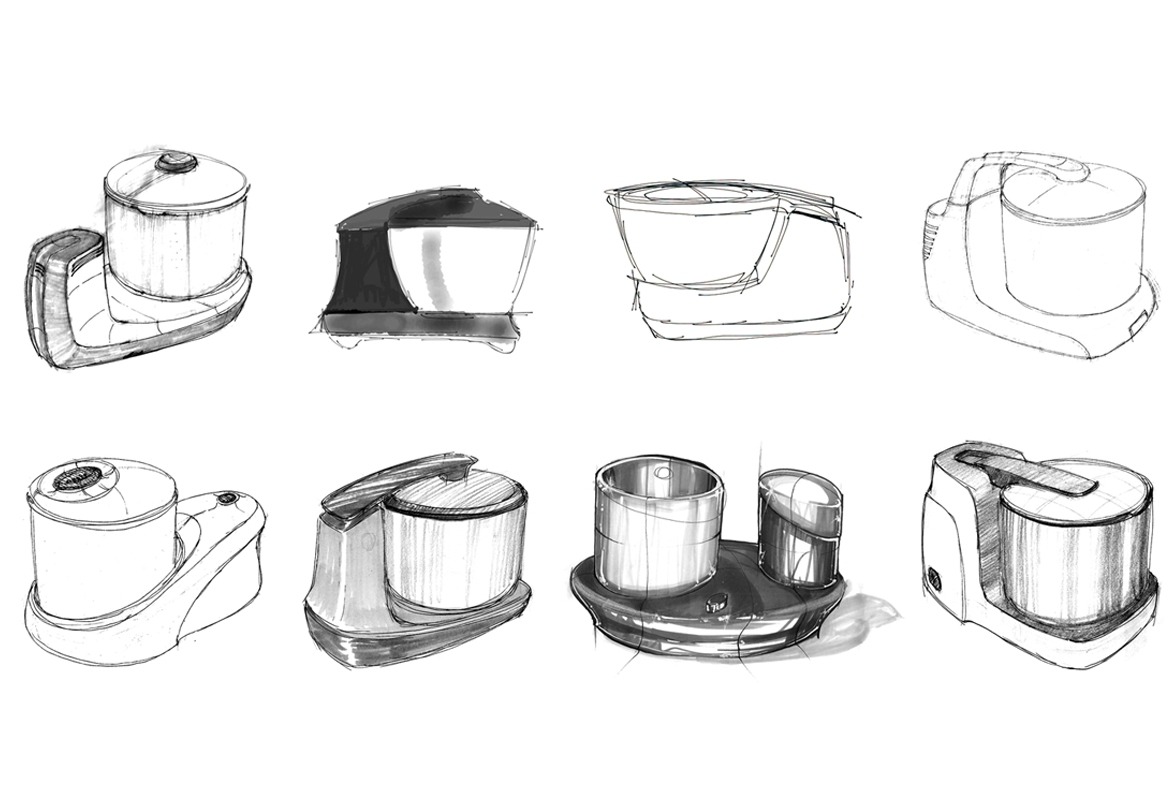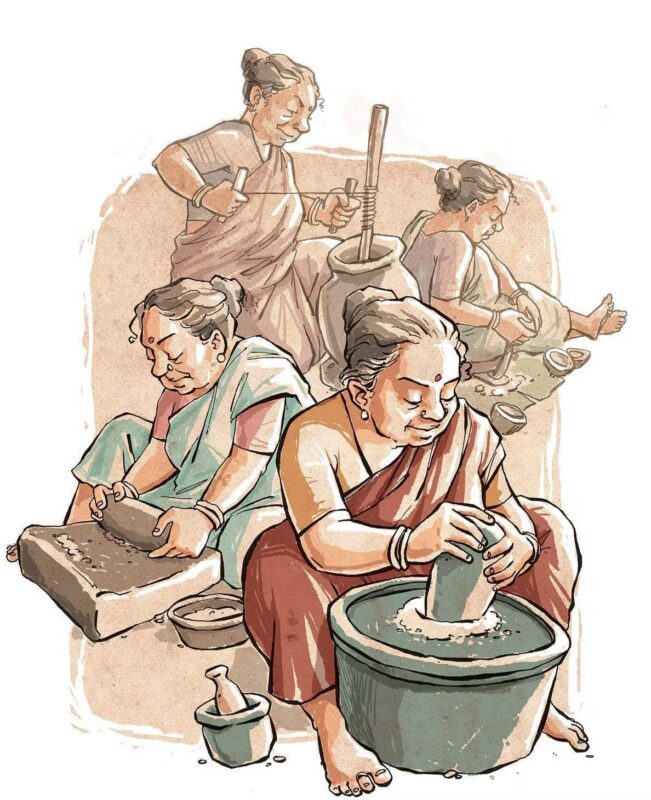Table Top vs Tilting Wet Grinder: A Comprehensive Comparison
Are you ready to dive into the world of wet grinders? If you’re a cooking enthusiast, you know that having the right tools can make all the difference in creating culinary masterpieces. In this guide, we’ll be exploring the intriguing debate of table top vs tilting wet grinders. These handy kitchen appliances are essential for transforming grains and lentils into smooth pastes and batters, but which one suits your needs best? Let’s embark on this journey of comparison and discovery.Table of Contents
| Sr# | Headings |
|---|---|
| 1. | Introduction |
| 2. | Advantages of Table Top Wet Grinder |
| 3. | Benefits of Tilting Wet Grinder |
| 4. | Choosing Between Table Top and Tilting Wet Grinder |
| 5. | Best Uses of Wet Grinders |
| 6. | Maintenance Tips for Longevity |
| 7. | Grinding Efficiency: Table Top vs Tilting |
| 8. | Exploring Wet Grinding Machine Types |
| 9. | Traditional vs Modern Grinding Methods |
| 10. | Water Drainage: Tilting Wet Grinders |
| 11. | Noise Levels: Table Top vs Tilting |
| 12. | Price Comparison and Value for Money |
| 13. | Motor Power and RPM: Unveiling the Specs |
| 14. | Grinding Capacity Matters |
| 15. | Design and Aesthetics: Blending Functionality and Style |
| 16. | Versatility of Tilting Wet Grinders |
| 17. | Grinding Consistency: A Crucial Factor |
| 18. | Safety Features in Wet Grinding Machines |
| 19. | Cleaning Made Easy |
| 20. | Expert Opinions That Matter |
| 21. | Conclusion |
| 22. | FAQs |
 1. Introduction
1. Introduction
When it comes to wet grinders, they are the heart and soul of traditional Indian cuisine. They effortlessly churn out batters for dosas, idlis, and vadas. However, the choice between a table top and a tilting wet grinder can be perplexing. Table top models are compact and space-saving, while tilting ones offer convenience in pouring out the batter. Both have their merits, so let’s delve into the details to help you make an informed decision.2. Advantages of Table Top Wet Grinder
Imagine a compact appliance that fits snugly on your kitchen counter – that’s the beauty of a table top wet grinder. It’s ideal for smaller kitchens where space is a premium. These grinders are user-friendly and easy to operate, making them perfect for beginners. Plus, their sleek design adds a touch of elegance to your cooking space.3. Benefits of Tilting Wet Grinder
Now, picture a wet grinder that lets you tilt the drum to pour out the contents easily. Tilting wet grinders offer unparalleled convenience, especially when it comes to cleaning and transferring the batter. They are a boon for larger households or commercial kitchens where grinding happens on a larger scale.4. Choosing Between Table Top and Tilting Wet Grinder
The choice between these two types depends on your kitchen layout, usage, and personal preference. If space-saving is a priority and you have a smaller family, a table top grinder might be your go-to. However, for those who value convenience and have more demanding grinding needs, a tilting grinder could be the better choice.5. Best Uses of Wet Grinders
Wet grinders aren’t limited to just making batters. They are versatile tools that can aid in preparing various dishes. From nut butters to masalas, these machines can handle a wide range of grinding tasks, making them indispensable in the kitchen.6. Maintenance Tips for Longevity
Like any appliance, wet grinders need proper care to ensure they have a long lifespan. Regular cleaning and timely oiling of moving parts are essential. Additionally, storing the grinder in a dry place can prevent rust and corrosion.7. Grinding Efficiency: Table Top vs Tilting
When it comes to grinding efficiency, both types perform admirably. However, some users swear by the efficiency of tilting grinders due to their ability to mix and grind the contents evenly. Table top grinders, on the other hand, might require occasional scraping down the sides for uniform grinding.8. Exploring Wet Grinding Machine Types
Wet grinders come in various sizes and capacities. Beyond the table top and tilting categories, there are also different sizes available, catering to various needs. Choosing the right size ensures you don’t waste energy or space.9. Traditional vs Modern Grinding Methods
While wet grinders have embraced modern technology, they still maintain the essence of traditional grinding. The slow and meticulous grinding process ensures that the natural flavors and nutrients of the ingredients are preserved.10. Water Drainage: Tilting Wet Grinders
One of the standout features of tilting wet grinders is the ability to pour out the contents with ease. This eliminates the need for scooping and scraping, making the cooking process more efficient and less messy.11. Noise Levels: Table Top vs Tilting
Noise can be a concern when it comes to kitchen appliances. Generally, tilting wet grinders tend to be quieter due to their design. Table top grinders might produce a bit more noise, but it’s not overly disruptive.12. Price Comparison and Value for Money
Price plays a significant role in any purchase decision. Table top grinders are usually more affordable than their tilting counterparts. However, the added convenience and features of tilting grinders might justify the higher cost for some users.13. Motor Power and RPM: Unveiling the Specs
The motor power and rotations per minute (RPM) determine how efficiently the grinder can handle different ingredients. Higher power and RPM are generally better for heavy-duty grinding, but for everyday home use, moderate specs should suffice.14. Grinding Capacity Matters
Grinding capacity refers to the amount of batter or paste the grinder can handle in one go. If you have a large family or frequently entertain guests, opting for a higher capacity grinder is a smart move.15. Design and Aesthetics: Blending Functionality and Style
Aesthetics might not be the top priority, but having a sleek and stylish wet grinder can enhance the overall look of your kitchen. Many manufacturers offer a variety of designs to choose from.16. Versatility of Tilting Wet Grinders
Tilting wet grinders not only simplify the pouring process but also allow you to easily remove the drum for cleaning. This versatility adds to the overall user experience.17. Grinding Consistency: A Crucial Factor
Consistency in grinding is crucial for achieving the perfect texture in your batters and pastes. Both table top and tilting grinders can deliver consistent results, provided they are operated correctly.18. Safety Features in Wet Grinding Machines
Safety is paramount in any kitchen appliance. Many modern wet grinders come with safety features like automatic shut-off in case of overload or overheating. These features provide peace of mind during use.19. Cleaning Made Easy
Cleaning a wet grinder can sometimes be a chore, but tilting grinders simplify this task. Their design allows for easy removal of the drum, making cleaning less of a hassle.20. Expert Opinions That Matter
Experts in the culinary and appliance industry have weighed in on the table top vs tilting wet grinder debate. Their insights can help you make a more informed decision based on your specific needs.Conclusion
In the realm of wet grinders, both table top and tilting options have their own set of advantages. Your choice ultimately depends on factors like kitchen space, usage frequency, and personal preferences. Whichever type you opt for, a wet grinder is undoubtedly a valuable addition to your culinary arsenal.FAQs
- Are tilting wet grinders more expensive? Yes, tilting wet grinders tend to be pricier due to their added features and convenience.
- Can I use wet grinders for other purposes besides batters? Absolutely! Wet grinders are versatile and can be used for grinding spices, nuts, and other ingredients.
- Are wet grinders hard to clean? While cleaning any kitchen appliance requires effort, tilting wet grinders are designed for easier cleaning due to their removable drums.
- Do higher RPMs result in better grinding? Higher RPMs can lead to faster grinding, but the quality of grinding also depends on factors like the design and sharpness of the grinding stones.
- Can I store leftover batter in the wet grinder? It’s not recommended to store batter in the grinder as it might affect its performance. Instead, transfer leftover batter to a separate container and refrigerate.
- Product on sale
 Vidiem Garnet Plus Wet Grinder ST (Grey & Orange) | Wet Grinder 2 litre with Atta kneading, Coconut scrapping | 5 Years WarrantyOriginal price was: ₹10,741.00.₹6,722.00Current price is: ₹6,722.00.
Vidiem Garnet Plus Wet Grinder ST (Grey & Orange) | Wet Grinder 2 litre with Atta kneading, Coconut scrapping | 5 Years WarrantyOriginal price was: ₹10,741.00.₹6,722.00Current price is: ₹6,722.00. - Product on sale
 Vidiem Vision Wet Grinder ST 330 A Wet GrinderOriginal price was: ₹6,944.00.₹5,138.00Current price is: ₹5,138.00.
Vidiem Vision Wet Grinder ST 330 A Wet GrinderOriginal price was: ₹6,944.00.₹5,138.00Current price is: ₹5,138.00. - Product on sale
 Vidiem Jewel ST Wet Grinder 303 A | Wet Grinder for All Types of Batter | Wet Grinder Perfect for Your Kitchen| Table Top Wet Grinder | 5 Years WarrantyOriginal price was: ₹10,990.00.₹7,690.00Current price is: ₹7,690.00.
Vidiem Jewel ST Wet Grinder 303 A | Wet Grinder for All Types of Batter | Wet Grinder Perfect for Your Kitchen| Table Top Wet Grinder | 5 Years WarrantyOriginal price was: ₹10,990.00.₹7,690.00Current price is: ₹7,690.00. - Product on sale
 Vidiem IRIS ADC Wet Grinder ST 327 A (White & Blue) | Wet Grinder 2 Litre with 1 Mult Chef jar for Slicing, Atta kneading, Citrus juicing, Coconut scrapping & Grating | 5 Years WarrantyOriginal price was: ₹16,119.00.₹10,099.00Current price is: ₹10,099.00.
Vidiem IRIS ADC Wet Grinder ST 327 A (White & Blue) | Wet Grinder 2 Litre with 1 Mult Chef jar for Slicing, Atta kneading, Citrus juicing, Coconut scrapping & Grating | 5 Years WarrantyOriginal price was: ₹16,119.00.₹10,099.00Current price is: ₹10,099.00. - Product on sale
 Preethi Astra Expert WG 912 2 Ltr Table Top Wet Grinder Without Food ProcessorOriginal price was: ₹11,885.00.₹9,734.00Current price is: ₹9,734.00.
Preethi Astra Expert WG 912 2 Ltr Table Top Wet Grinder Without Food ProcessorOriginal price was: ₹11,885.00.₹9,734.00Current price is: ₹9,734.00. - Product on sale
 SmartFingers Optima Table Top Wet Grinder 230V 50hz, 2 Liter, WhiteOriginal price was: ₹6,660.00.₹5,399.00Current price is: ₹5,399.00.
SmartFingers Optima Table Top Wet Grinder 230V 50hz, 2 Liter, WhiteOriginal price was: ₹6,660.00.₹5,399.00Current price is: ₹5,399.00. - Product on sale
 SmartFingers Comfort Plus Mini Table Top Wet Grinder 230V 50hz, 1.25 Liter, PinkOriginal price was: ₹8,990.00.₹7,289.00Current price is: ₹7,289.00.
SmartFingers Comfort Plus Mini Table Top Wet Grinder 230V 50hz, 1.25 Liter, PinkOriginal price was: ₹8,990.00.₹7,289.00Current price is: ₹7,289.00. - Product on sale
 SmartFingers Comfort Plus Table Top magic Wet Grinder 230V 50hz, 2 Liter, White, 2 StoneOriginal price was: ₹9,990.00.₹8,129.00Current price is: ₹8,129.00.
SmartFingers Comfort Plus Table Top magic Wet Grinder 230V 50hz, 2 Liter, White, 2 StoneOriginal price was: ₹9,990.00.₹8,129.00Current price is: ₹8,129.00. - Product on sale
 Butterfly Wet Grinder Magnum Lite 110-120 volts, 1.5 Litres, 230 watts (For use in USA and Canada only)Original price was: ₹9,999.00.₹8,099.00Current price is: ₹8,099.00.
Butterfly Wet Grinder Magnum Lite 110-120 volts, 1.5 Litres, 230 watts (For use in USA and Canada only)Original price was: ₹9,999.00.₹8,099.00Current price is: ₹8,099.00.


